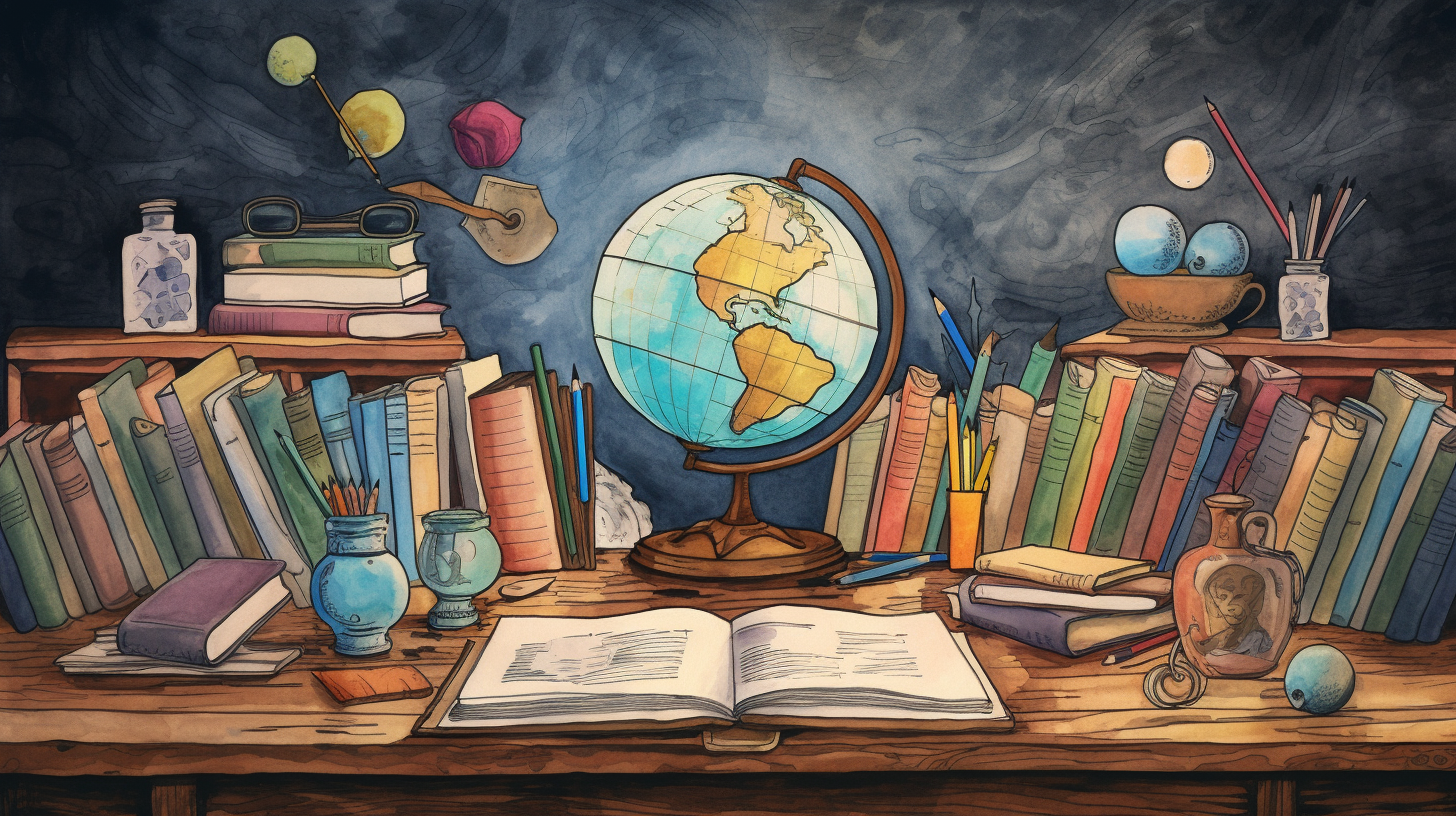In a world brimming with information, you’ve likely pondered, “Is nonfiction real or fake?” It’s a question that taps into the essence of human curiosity and our relentless pursuit of truth. Nonfiction, a genre as old as writing itself, is meant to be a genuine look at reality, but how often does it live up to that promise?
This article will guide you through the maze of understanding nonfiction. We’ll start by defining nonfiction and its various forms. Then, we’ll explore the nature of nonfiction and the thin line it walks between fact and creative interpretation. You’ll learn about the challenges in nonfiction that make discerning truth from fiction a sophisticated skill.
Further, we’ll investigate identifying fake nonfiction, an increasingly necessary ability in the digital age. Finally, we’ll emphasize the importance of critical thinking, an indispensable tool when navigating the complex landscape of nonfiction—strap in for an enlightening journey into the realm where reality meets the written word.
Defining Nonfiction
When you’re exploring the realm of literature, it’s essential to understand the terms “fiction” and “nonfiction.” These two categories divide the literary world, each with its own characteristics and purposes. Nonfiction encompasses texts based on facts and actual events. It provides you with information and first-hand experiences that are grounded in reality.
Understanding what nonfiction is is paramount when you’re trying to discern the authenticity of the material you consume. Nonfiction covers an array of genres, including biographies, essays, journalism, and educational books. These works are built on factual accuracy and real-life occurrences. Hence, when addressing “Is nonfiction real or fake?” one can firmly state that nonfiction aims to be accurate. But, it’s worth noting that presenting facts can sometimes be creative, leading to questions about their truthfulness.
In contrast to fiction, which springs from imagination, nonfiction demands verification and proof. Here are key points that define nonfiction:
- Nonfiction is factual, providing real-world information.
- Authors of nonfiction are held to a standard of truthfulness that isn’t required of fiction writers.
- The intent behind nonfiction is to inform, educate, or persuade readers about actual events or concepts.
The debate on “fiction vs nonfiction” often focuses on authenticity. While nonfiction asserts its reality through provable substance, fiction narrates invented stories not meant to be taken as truth, even though it may contain elements of realism or factual references. In your quest to understand the difference between fiction and nonfiction, consider the intention; nonfiction seeks to depict reality, whereas fiction entertains or explores hypothetical scenarios.
Remember, the distinction is not merely academic but practical. Knowing if a book is nonfiction or fiction influences your expectations and understanding as a reader. With nonfiction books, you’re delving into subjects expecting to emerge more informed about factual matters, whereas fiction allows you to escape into the creative expanses of the writer’s mind.
The Nature of Nonfiction
Objective Reality
When you pick up a nonfiction book, you engage with an author’s representation of the truth. Nonfiction is rooted in objective reality, as it’s expected to recount facts and real-life occurrences that can be verified. The essence of nonfiction rests in its pledge to offer the truth, a standard that distinguishes it from fiction. Is nonfiction real or fake? This question often surfaces due to the claims of factual accuracy that nonfiction books make, asserting that what nonfiction encompasses is a depiction of actual events, concepts, and existing phenomena.
Authors of nonfiction use reality as their canvas, where even aspects like creative structuring and compelling prose are underpinned by truthfulness. When delving into a nonfiction story, the main difference between fiction and nonfiction writing is that the former relies on truthful reporting while the latter enjoys the freedom of imagination. So, nonfiction must maintain integrity by presenting an unaltered view of reality.
Fact-Checking and Verification
In the realm of nonfiction, rigorous fact-checking and verification processes are vital. These methods ensure that the material presented to you doesn’t veer into fiction, real or fake territory. Authors and publishers invest considerable effort in verifying every claim, anecdote, or data point to avoid misinformation and uphold the meaning of nonfiction. Thorough research is the backbone of credible nonfiction work.
What is a nonfiction book if not a compilation of carefully scrutinized information? Compelling nonfiction also entails using examples of fiction only for contrasting purposes, illuminating the reality of the nonfiction narrative. Whether it’s history, biography, or instructional material, the credibility of a nonfiction piece hangs on its accuracy and adherence to verified facts.
Credible Sources
As a reader exploring fiction vs nonfiction, understanding what fiction and nonfiction are depends significantly on the credibility of the sources cited. Nonfiction authors aim to build trust by referencing authoritative texts, interviewing renowned experts, and consulting primary documents. The intention is to reinforce the book’s authenticity and provide you with confidence in the nonfiction book’s meaning.
In contrast to fiction and nonfiction, where fiction often weaves in fictitious elements for storytelling, nonfiction stands firm on a foundation of factual evidence. The difference between fiction and nonfiction lies in the content’s veracity—the former can bend reality, while the latter serves it straight up. Maintaining transparency in sourcing is a hallmark of trustworthy nonfiction, creating a clear delineation between fiction examples and non-fictional works.
Challenges in Nonfiction
Bias and Perspective
Nonfiction is often distinguished by its adherence to truth, but Bias and Perspective still play prominent roles. Even while presenting facts, an author might project personal biases, consciously or otherwise. Your understanding of nonfiction meaning deepens when you consider the unavoidable presence of these human elements. Consider, for example, political biographies. The author’s perspective often influences the portrayal of events, highlighting the delicate line between is nonfiction real or fake.
Misinterpretation and Misrepresentation
Nonfiction faces the challenges of Misinterpretation and Misrepresentation. When you consume nonfiction content, awareness is vital. Facts can be skewed or presented in a way that subtly alters their meaning. In the vast sea of nonfiction books, differentiating between an accurate representation and a misrepresented fact requires a critical eye. This is where the clash between what fiction and nonfiction stand for becomes most evident.
Manipulation and Propaganda
In some nonfiction works, the intention isn’t just to inform and influence. So, such texts might cross over into manipulation and propaganda. While exploring what nonfiction is, discerning readers like you question the motive behind the text. False information can be propagated under the guise of nonfiction, demonstrating that fiction is real or fake, depending mainly on how information is presented to you.
Identifying Fake Nonfiction
Fake News
You’ve likely heard the term “fake news,” a natural phenomenon muddying the waters of your understanding. It rejects the boundaries between fiction and nonfiction. Fake news presents itself under the guise of legitimate reports, yet it distorts the truth, confusing what’s real. Spotting these fabrications means looking beyond sensational headlines and seeking credible sources, which sets real nonfiction apart from misleading content.
When immersed in an audiobook, the last thing you want is to question the integrity of what you’re hearing. With nonfiction audiobooks, you expect to listen to facts and reputable information, not the skewed reality characteristic of fake news. Being critical and discerning of content enhances your experience, ensuring you invest time listening to work grounded in nonfiction authenticity.
Conspiracy Theories
Conspiracy theories are provocative and compelling and often have just enough truth to make them seem plausible. They thrive on the ambiguity around what is fiction and what is nonfiction; they masquerade as nonfiction content, preying on uncertainty and skepticism. What is nonfiction if not the factual accounting of events, phenomena, and ideas? Yet, conspiracy theories twist these realities, creating alternate explanations that complicate your quest for knowledge.
Navigating these theories requires a sharp mind and a reliance on evidence. While absorbing the richly detailed narrative of a nonfiction audiobook, you must differentiate verified information from these beguiling but unfounded speculations. The distinction is critical because, unlike fiction books, whose purpose is to entertain, nonfiction demands factual integrity.
Pseudoscience
Pseudoscience presents a subtle challenge in nonfiction; it’s a seductive mix of unverified claims and scientific-sounding language. It raises questions about validity: Is this nonfiction book real or fake? What does fiction and nonfiction mean if pseudoscientific content blurs the lines? Unlike nonfiction books, which hinge on tested evidence, pseudoscience banks on beliefs and theories that lack empirical support. It’s the antithesis of nonfiction meaning, as it offers conjecture instead of confirmed facts.
In the world of audiobooks, where the merit is often found in the ease of learning while multitasking or relaxing, pseudoscience material can mislead and misinform. Pursuing factual and truthful content should lead you toward nonfiction titles acclaimed for their adherence to scientific principles, not those that bend reality to fit a narrative.
Navigating through the complex landscape of nonfiction and fiction requires vigilance. Stay informed and question narratives, whether reading or investing in a nonfiction audiobook. Recognizing the difference between fiction and nonfiction is crucial, as the former allows for creativity while the latter obliges the factual representation of reality.
The Importance of Critical Thinking
Media Literacy
In today’s rapidly evolving digital landscape, you’re constantly bombarded with myriad information—some nonfiction, some fiction, and, at times, the lines between the two blur. Media literacy is critical to discern nonfiction’s factual integrity from the imaginative allure of fiction. You can access, analyze, evaluate, and create media in various forms.
By enhancing your media literacy, you can identify what is nonfiction and safeguard yourself against misinformation. For those who prefer the convenience of audiobooks, engaging with nonfiction audiobooks hones your critical listening skills, enabling you to distinguish fact from creatively-embellished content in real time.
Fact-Checking Skills
When exploring nonfiction books, the integrity of the facts presented is paramount. Fact-checking skills involve a systematic approach to verifying information against reliable sources. It’s pivotal for confirming whether nonfiction is real or fake and understanding its meaning. Whether you’re reading a hard copy or indulging in an audiobook, you need to maintain a healthy skepticism, cross-reference facts, and explore the context. This practice applies to nonfiction stories and is useful for analyzing fiction versus nonfiction narratives, ensuring that representations of real-world facts within fiction are accurate.
Skepticism and Questioning
Fiction is real or fake posed as a question highlights a nuanced truth—fiction narrates fabricated stories that may mirror reality, while nonfiction delves into actual events. But, skepticism and questioning are vital in navigating both, considering what’s the main difference between fiction and nonfiction writing. You should approach every claim with a curious mindset, probing deeper into the definition of fiction and nonfiction, asking critical questions like whether fiction is fake or nonfiction is real.
Skepticism isn’t about dismissing information outright but rather about challenging it constructively to reveal the underlying truth. As you listen to an audiobook, be it fiction or nonfiction, use these skills to enhance your auditory experience, permitting a richer understanding, even for fiction examples that may present facets of reality.
Conclusion
You’ve seen the complexities nonfiction faces in an era rife with misinformation. Your ability to think critically and enhance your media literacy is more important than ever. By honing fact-checking skills and nurturing a healthy skepticism, you’re not just protecting yourself from being misled—you’re also ensuring that the nonfiction you nonfiction is as close to the truth as possible. Remember, the power to distinguish reality from fabrication lies in your hands. Use it wisely to navigate the vast sea of information surrounding you daily.
Frequently Asked Questions
Is nonfiction considered fake?
Nonfiction is based on actual events, facts, and people; hence, it is considered real. It includes genres such as history, biography, and science, as opposed to fiction, which involves imagined scenarios and characters.
What is considered the best nonfiction book of all time?
Nonfiction is subjective to declare a single best nonfiction book of all; classics like “On Writing” by Stephen King, “Maus” by Art Spiegelman, and “Guns, Germs, and Steel” by Jared Diamond are highly regarded.
Are all nonfiction books fact?
Nonfiction books are factual, presenting accurate information, true events, and authentic narratives across various genres, including biographies, history, and science.
Why should I read nonfiction?
Reading nonfiction expands vocabulary and understanding of the world. It informs about factual events and can aid in developing critical thinking and making informed decisions.
What are the essential rules to remember when writing nonfiction?
The main focus of nonfiction is on relevancy, truth, and accuracy. This includes quoting sources accurately, avoiding clichés, and checking facts meticulously. Correct spelling, grammar, and punctuation are also crucial.




